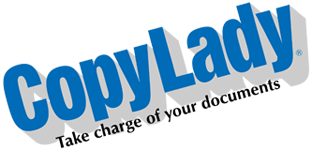Much ado about Wide Format printers and what you can do with them!
Good Morning! I know, this post is a day late, but that’s because you can’t rush awesome! Today, we’re going to talk about plotters, or wide-format printers.
WHAT IS A WIDE FORMAT PRINTER: A wide format printer, or a plotter as it is often referred to, is a large printer designed for larger paper sizes well past the 12×18 sheet. These machines are very commonly used in many industries, such as construction and manufacturing.
Unlike your traditional copier, which uses paper sizes that are common to most offices, wide format machines can print on paper sizes up to 44 inches in width, and as much as 55 to 60 inches in length! Talk about a HUGE DOCUMENT, am I right??
Unlike your traditional office copier, which uses reams of paper, wide format machines commonly use rolls of paper. Some wide format machines DO have the ability to print to normal office paper, which is usually referred to as a “cut sheet”.
HOW IT WORKS: When it comes to printing, wide format machines work in the same way as your everyday office printer, for the most part anyway.
They take the paper, and print to it. The only difference here is, well, since the wide format uses a roll of paper to print, there is an extra step in the process. Once the print job is complete, the machine will then cut the finished product off the roll, depositing it either into a catch net below the machine, or into an exit area near the top or rear of the machine.
TYPES OF WIDE FORMAT: There’s three types of wide format out there: Injket, Laser, and Dye Sublimation. While Inkjet and Laser are common in the majority of industries that use them, Dye sublimation printers are used exclusively in the textile industry for printing onto things such as t-shirts.
Just like your office printers and copiers, Inkjets take ink cartridges and use a moving head to produce an image, while laser units use toner, lasers, developers and imaging drums to produce their images.
Dye sublimation printers work in the exact same way as their inkjet counterparts, but they use a special type of ink that is transferred by heat press from transfer paper to the textile. The transfer process is done entirely outside of the printer.
WHERE WOULD ONE BE USED: There’s many uses for a wide format printer:
* CONSTRUCTION: If there is one major industry in the world such a beast would be used, it is in construction. The biggest use of a wide format in this case is to print out floor plans and blueprints for a current project.
* CAD DESIGN: Right behind construction, is CAD design. CAD design is used in many industries, from manufacturing, all the way to construction. In this case, designers would use a wide format machine to print off their designs, in order to send them to be manufactured into the final product.
* TEXTILE PRINTING: Have you wondered how those cool designs get put on those t-shirts you scored from your favorite rock band’s last concert? Wide formats play a role here too! In this case, a special type of printer, known as a dye sublimation printer, is used to print out designs using a special type of ink onto transfer paper. This is then pressed onto the fabric using heat.
* ENGINEERING: Yep, Engineers need em too! In this industry, wide formats are used to print out engineering blueprints for various things, from infrastructure to buildings! Engineering and Construction go hand in hand.
* GOVERNMENT: They have a use here too! Often times, they use them to print out maps of an area, as well as other things, such as charts. Wide formats are used in a fair range of government settings, ranging from emergency services all the way to the military.
If YOU need a wide format for your business, You can give us a call at 239-939-5383!

